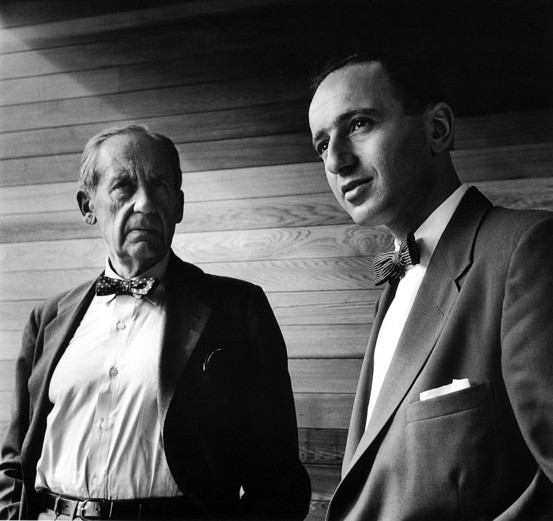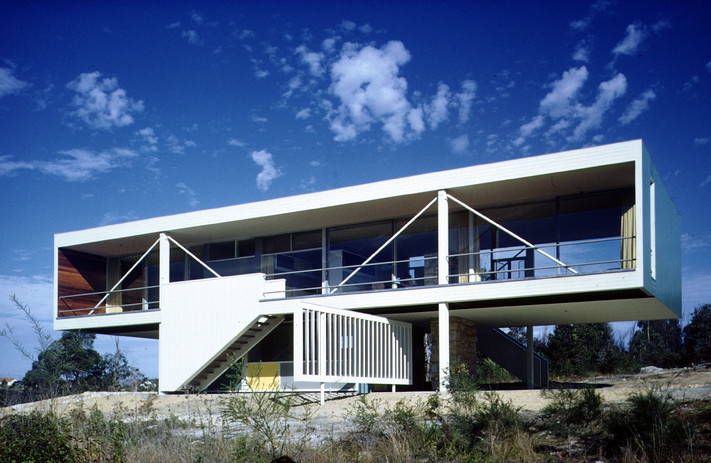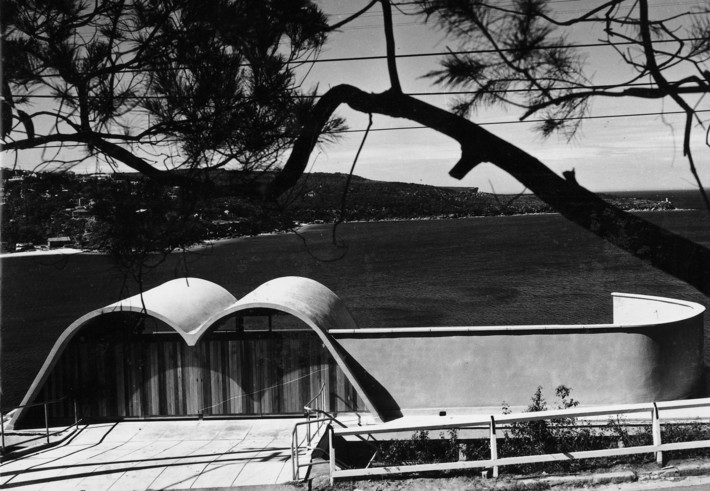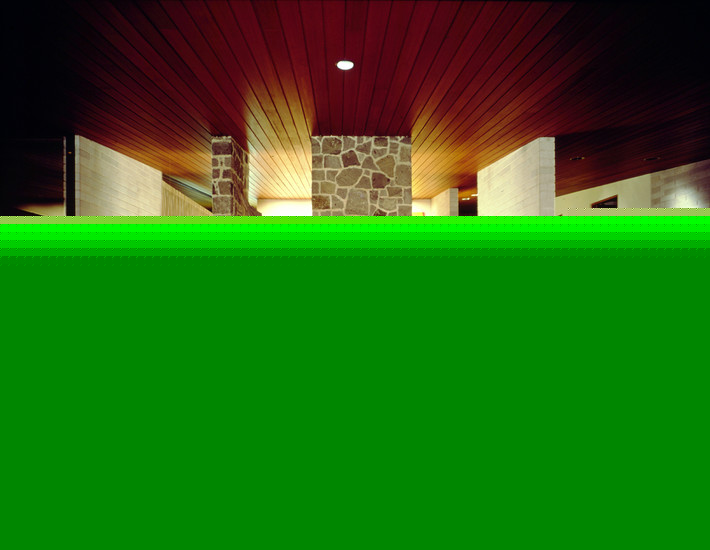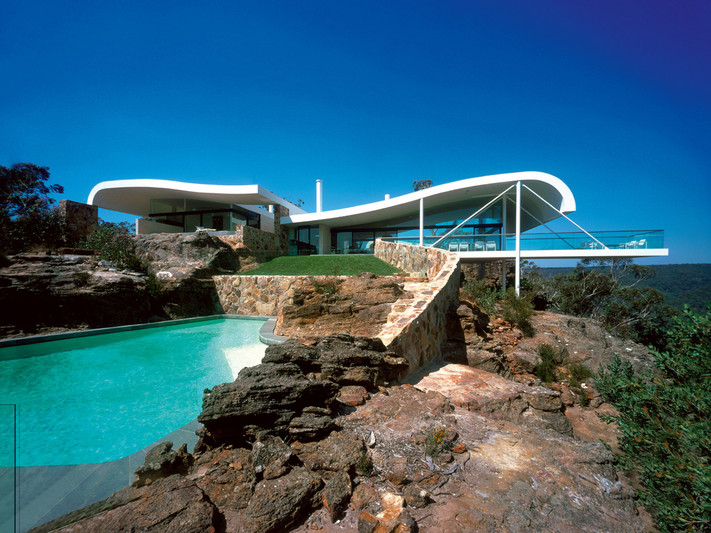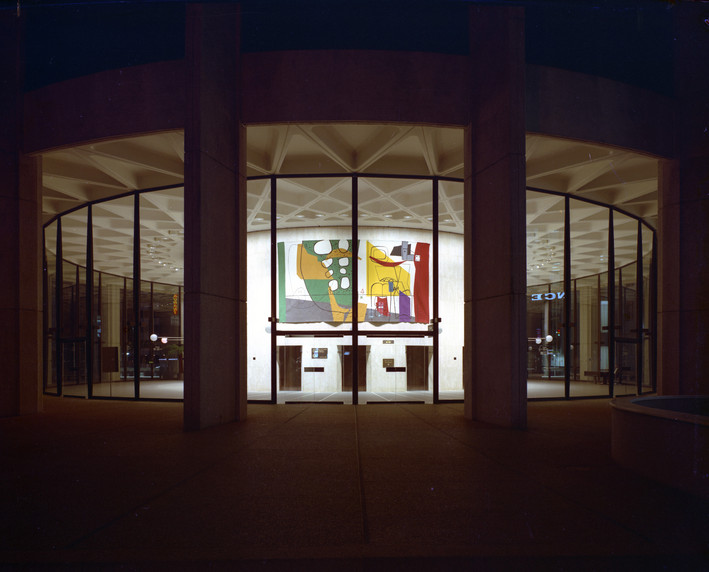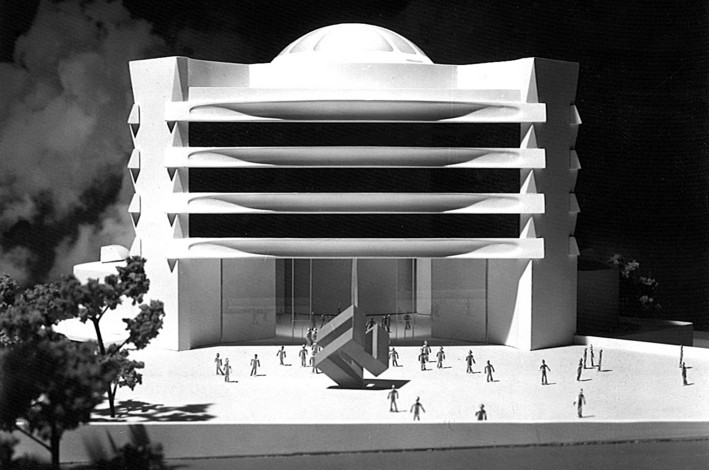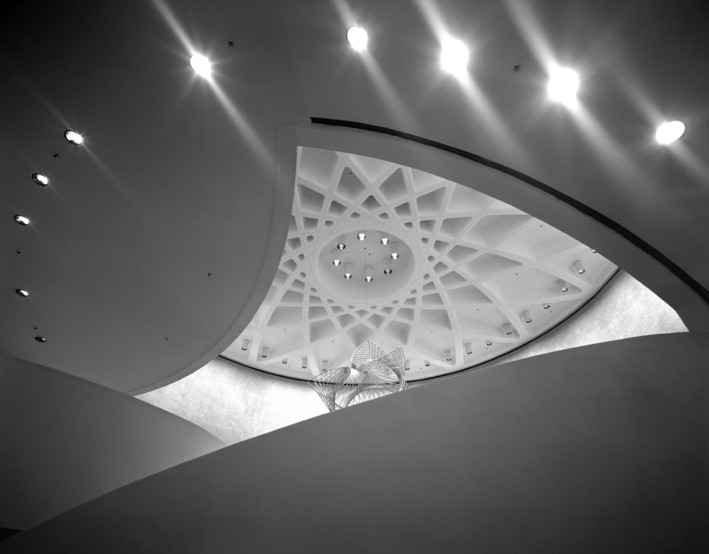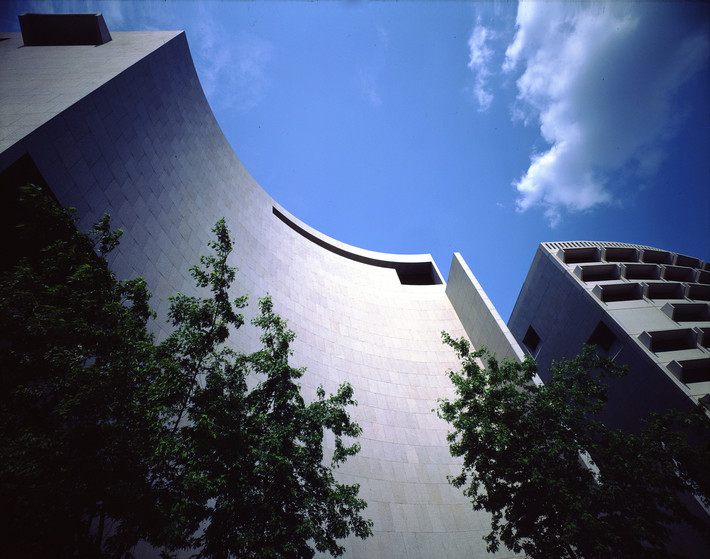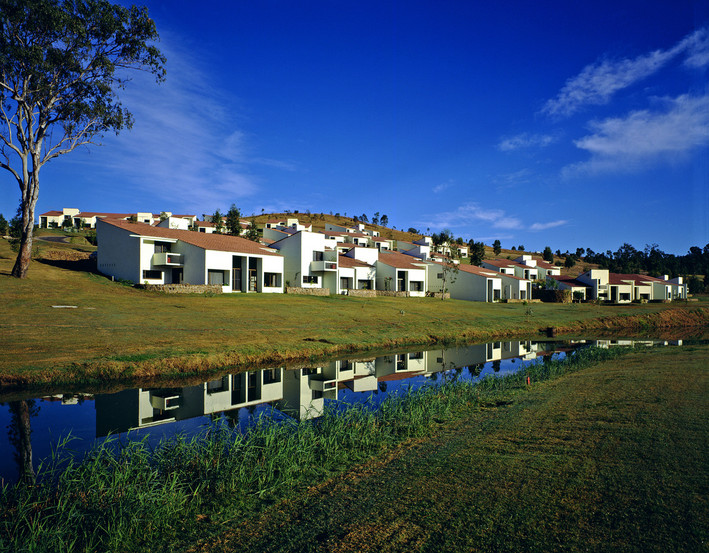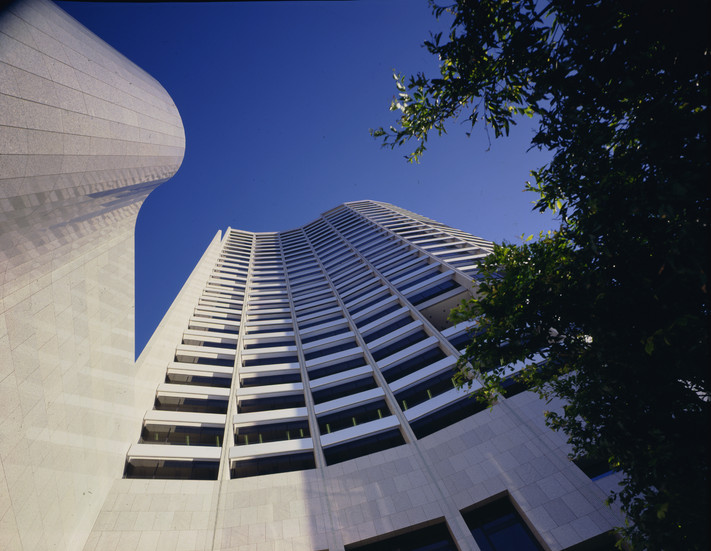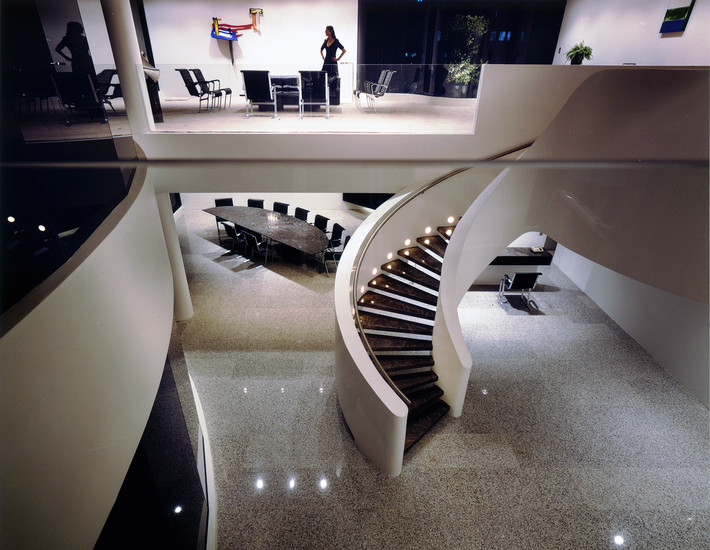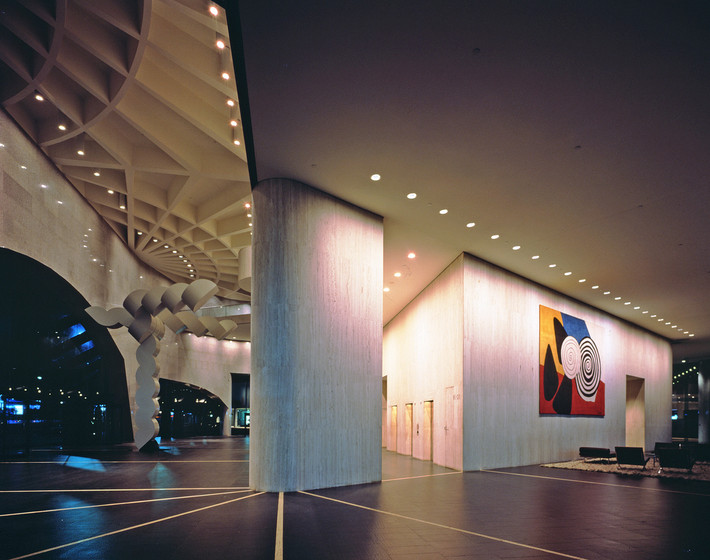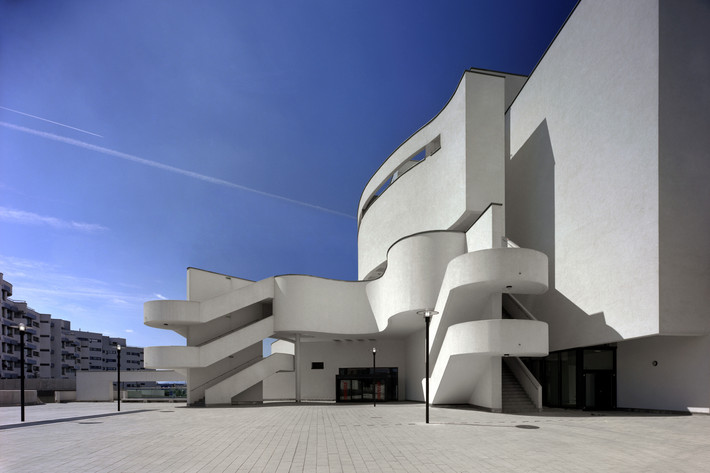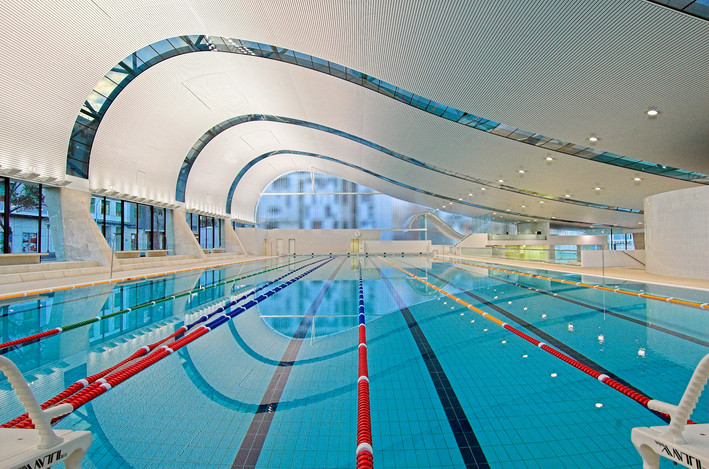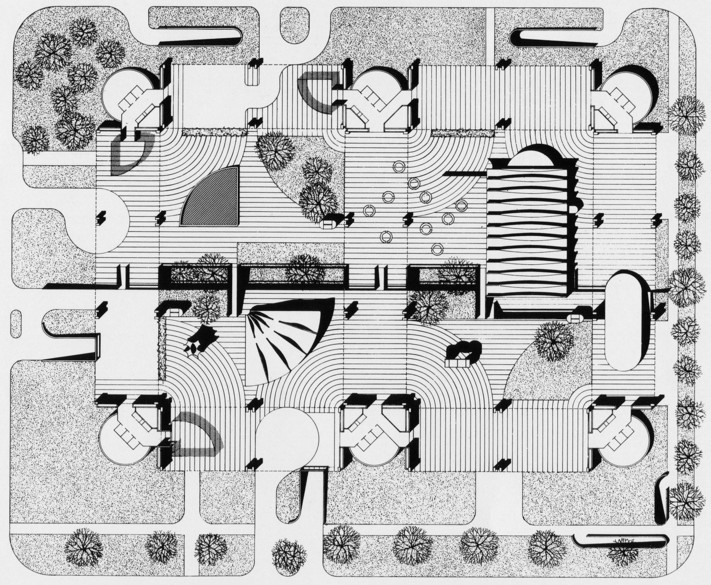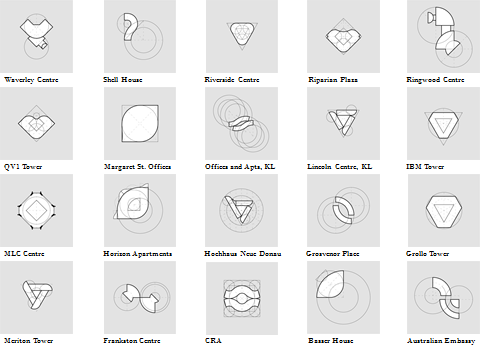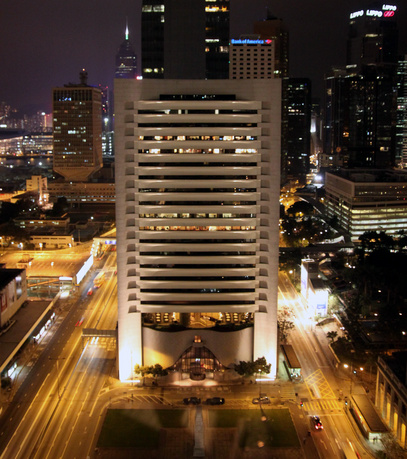|
Dear friends, By Vladimir Belogolovsky
The exhibition celebrates the 90th anniversary of the birth of Australian modernist Harry Seidler and traces his diverse architecture through creative collaborations with eleven visionaries: Josef Albers, Marcel Breuer, Alexander Calder, Norman Carlberg, Max Dupain, Sol LeWitt, Pier Luigi Nervi, Oscar Niemeyer, Charles Perry, Frank Stella, and Lin Utzon.
For the tour schedule please visit:
For lecture (4 October, 5pm) preview please visit:
To like us on Facebook please visit:
Museum of Estonian Architecture, Tallinn, Estonia
4 October, 2012, 5pm
Harry Seidler: Architecture, Art and Collaborative design illustrated lecture traces the life and work of Sydney architect Harry Seidler (1923-2006), his key role in bringing Modernism and Bauhaus principles to Australia, identifies his distinctive architectural style, and explores long-lasting collaborations with leading creative figures of the 20th century, including with architects Marcel Breuer and Oscar Niemeyer; artists Josef Albers, Alexander Calder, Norman Carlberg, Charles Perry, Frank Stella, and Lin Utzon; engineer Pier Luigi Nervi, photographer Max Dupain, and developer Gerardus Dusseldorp. In almost sixty years, Seidler has realized over 160 of his designs—from houses to mixed-use multi-story towers and prominent government commissions—all over Australia, as well as in Austria, France, Israel, Italy, Mexico, and Hong Kong. Apart from the architect’s creative achievements, the lecture will reveal a story of Seidler’s life, a fascinating journey from his motherland of Austria to England, Canada, the United States, Brazil, and finally, to Australia, where he settled in 1948, eventually becoming the country’s most accomplished architect. Among projects to be discussed: Rose Seidler House (1950), the architect’s house (1967), Australia Square Tower (1967) – all in Sydney; Edmund Barton Building (1974) in Canberra, Embassy of Australia (1977) in Paris, Hong Kong Club (1984) in Hong Kong, Shell Headquarters (1989) in Melbourne, and residential complex Wohnpark Neue Donau (1998) in Seidler’s native Vienna.
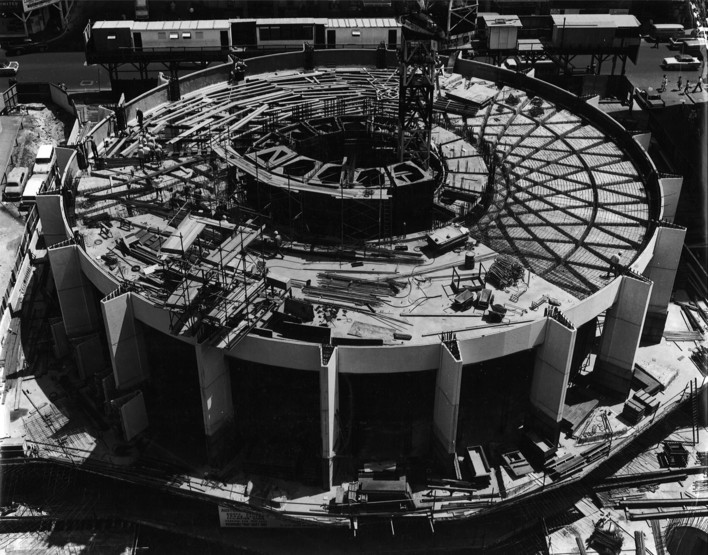 |
|
Australia Square Tower, Sydney, 1961-67; Under Construction, photo by Max Dupain
|
|
Architecture, Art and Collaborative Design isatraveling exhibition celebrating the ninetieth anniversary of the birth of Harry Seidler, the leading Australian architect of the twentieth century. The exhibition traces Austrian-born Seidler’s key role in bringing Bauhaus principles to Australia and identifies his distinctive place and hand within and beyond modernist design methodology. The fifteen featured projects—five houses and five towers in Sydney, and five major commissions beyond Sydney—focus on Seidler’s lifelong creative collaborations, a pursuit he directly inherited from Bauhaus founder Walter Gropius, with progressive artistic visionaries: architects Marcel Breuer and Oscar Niemeyer, engineer Pier Luigi Nervi, photographer Max Dupain, and artists Josef Albers, Alexander Calder, Norman Carlberg, Sol LeWitt, Charles Perry, Frank Stella, and Lin Utzon. This exhibition was developed by Intercontinental Curatorial Project with Penelope Seidler and Harry Seidler & Associates in Sydney and is presented through architectural models, sculpture maquettes, photographs, films, correspondence, books, scrapbooks, periodicals, drawings, and original sketches—provided by the architect’s family, Historic Houses Trust of New South Wales, The Josef & Anni Albers Foundation, The Marcel Breuer Digital Archive at Syracuse University, and the private archives of artists Norman Carlberg, Charles Perry, and Lin Utzon.
Harry Seidler: Lifework book by Vladimir Belogolovsky with additional texts by Chris Abel, Barry Bergdoll, Norman Foster, Kenneth Frampton, and Oscar Niemeyer will be designed by Massimo Vignelli and published by Rizzoli in March 2014.
|
|
|
With Walter Gropius in Julian Rose House, 1954, Sydney; photo by Max Dupain
“As much as the needs of fact, the needs of the spirit and the senses,
must be satisfied. Architecture is as much a part of the realm of art as
it is of technology; the fusion of thinking and feeling.”
Harry Seidler, 1963
|
|
Exhibition Venues and Dates:
Museum of Estonian Architecture, Tallinn, Estonia: 4 October–25 November, 2012
National Gallery for Foreign Art, Sofia Bulgaria: 20 December, 2012–20 January, 2013
Latvian National Museum of Art, Riga, Latvia: Late February–late March, 2013
AIA Center, Houston, USA: 4 April–31 May, 2013
Black Mountain College Museum, North Carolina, USA: 14 June–7 September, 2013
University of Manitoba, Winnipeg, Canada: 12 September–late October, 2013
Museum of Sydney, Sydney, Australia: 26 July–9 November, 2014
Planungswerkstatt, Vienna, Austria: Early December, 2014–mid-January, 2015
|
|
|
Julian Rose House, Wahroonga, Sydney, 1949-50; photo by Max Dupain
|
|
|
Williamson House (Igloo House), Mosman, Sydney, 1951; photo by Max Dupain
|
|
|
Harry and Penelope Seidler House, view from North, Killara, Sydney, 1966-67; photo by Max Dupain
|
|
|
Harry and Penelope Seidler House, Interior, Killara, Sydney, 1966-67; photo by Max Dupain
|
|
|
Berman House, Joadja, New South Wales, 1996-99; photo by Eric Sierins
|
|
|
Australia Square Tower, Sydney, 1961-67; photo by Max Dupain
|
|
|
High Court of Australia Competition, Canberra, Australia, 1972 (project)
|
|
|
MLC Centre, Sydney, Theater lobby with "Mercator" by C. Perry, 1972-75; photo by Max Dupain
|
|
|
Australian Embassy, Paris, France, 1973-77; photo by Max Dupain
|
|
|
Hillside Housing, Kooralbyn, Queensland, Australia, 1979-82; photo by Max Dupain
|
|
|
Shell Headquarters, Melbourne, 1985-89; photo by John Gollings
|
|
|
Seidlers Glen Street Penthouse, Sydney,1988; photo by Eric Sierins
|
|
|
Riverside Centre, Lobby with "Winter Wind" by N. Carlberg, Brisbane, 1983-86; photo by Eric Sierins
|
|
|
Wohnpark Neue Donau, Vienna, 1993-98; photo by Eric Sierins
|
|
|
QV1 Office Tower, Perth, Australia, 1987-91; photo by Eric Sierins
|
|
|
Ian Thorpe Aquatic Centre, Sydney, 2001-07; photo by Eric Sierins
|
|
|
Trade Group Offices (now called Edmund Barton Building), Canberra, 1970-1974; Site/Roof Plan
|
|
|
Comparative geometrical plan diagrams of 20 buildings and projects by H. Seidler
|
|
Harry Seidler (25 June 1923 Vienna - 9 March 2006 Sydney) was the first architect to fully express Bauhaus principles in Australia, exemplified by his first project, which was built in 1950 for his parents—the Rose Seidler House in Wahroonga, north of Sydney. All his life, he was, in his own words, “the torchbearer of modern architecture”—a sincere missionary for the cause of modernism. Seidler left a distinct mark on our world, most noticeably with his Australian Embassy in Paris, Hong Kong Club in Central Hong Kong, Wohnpark Neue Donaularge residential community in Vienna, and, above all, through his many characteristic towers, which essentially define the skyline of contemporary Sydney.
A native of Vienna, Seidler was the second son in the upper middle-class Jewish family of Max Seidler, a self-made textile business owner, and Rose Seidler, who came from a large family that owned a timber cutting business. In 1938, at the age of fifteen, he fled to England soon after Nazi Germany invaded Austria. In May 1940, he was interned by British authorities as an “enemy alien,” transported first to the Isle of Man and then to a detention camp near Quebec City in Canada. In October 1941, he was released on parole to study architecture at the University of Manitoba in Winnipeg.
Seidler received his master’s degree at Harvard’s Graduate School of Design, where he studied on scholarship from 1945-46 under Walter Gropius and Marcel Breuer, a lifelong mentor and friend. He then attended Black Mountain College in North Carolina, where he studied under the painter Josef Albers, followed by employment as Breuer’s first assistant in New York. In 1948, Seidler was invited by his mother to come to Australia, where his parents immigrated after the war, to design a house for them. En route to Australia, Seidler worked at Oscar Niemeyer’s office in Rio de Janeiro for a few months.
In September 1948, Seidler established a practice in Sydney. The ambitious twenty-five-year-old’s tiny studio/apartment featured a prominently displayed statement: “Australia’s present day building practices are outdated. They cry out for rejuvenation. It is the policy of this office to create new standards which will produce a progressive contemporary architecture.” The architect’s prolific career to follow, spanning almost sixty years, proved him right. Nearly 160 of his projects—from single family houses to apartment buildings, multi-story office towers to civic and cultural centers, as well as important government commissions, were realized in Australia, Austria, France, Israel, Italy, Mexico, and Hong Kong.
Seidler’s instantly recognizable body of work, marked by a strong sense of geometry, baroque in origin, a feel for robust balanced compositions, a knowledge of structure and materials, and the use of inventive shading devices that effectively respond to the intense Australian sun distinguish him as the most uncompromising and artistic architect in his adopted country, and one of the most persevering and ingenious architects of his time anywhere. His architecture embodies numerous sources and influences that he strategically sought out and refined over the course of his career—confidence, social purpose, and a methodological and collaborative approach to design from Gropius; residential types, the power of concrete, and the warmth of wood from Breuer; standardized building systems and expressive structural language from Nervi; sculptural fluidity and lyrical forms from Niemeyer; and a profound understanding of how our eyes react to visual phenomena from Albers.
From the 1970s on, Seidler’s hand became increasingly influenced by modular works of American abstract expressionist painters and sculptors, evolving into a distinctly personal artistic language yet to be recognized by the profession internationally. Seidler’s late work, however free and sculptural, is never arbitrary. His majestic forms were perpetually defined by rational planning, efficiency of standardized construction, and social and environmental considerations.
Vladimir Belogolovsky, Curator
|
|
|
Hong Kong Club, 1980-84; photo by V. Belogolovsky (2011)
|

© All Right Reserved. Copyright © ООО Информагентство СА "Архитектор" ©
Свидетельство о регистрации ИА №ФС1-02297 от 30.01.2007
Управление Федеральной службы по надзору за соблюдением законодательства в сфере массовых коммуникаций и охране культурного наследия по Центральному Федеральному округу.

